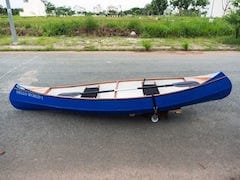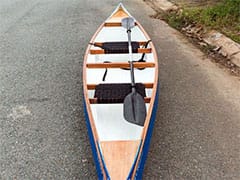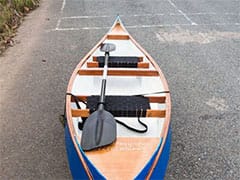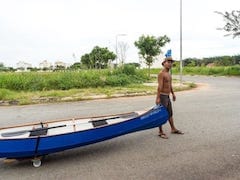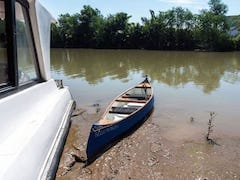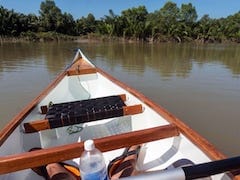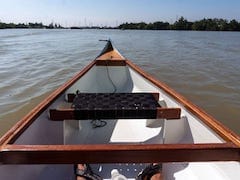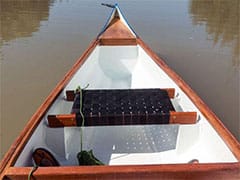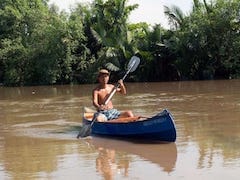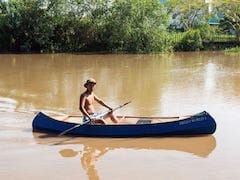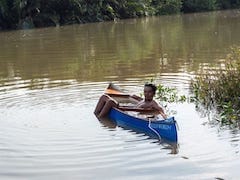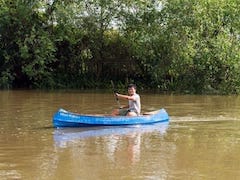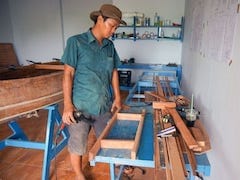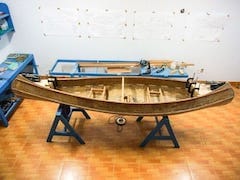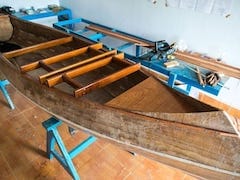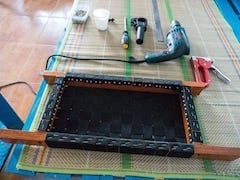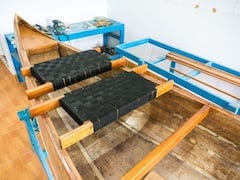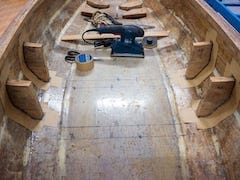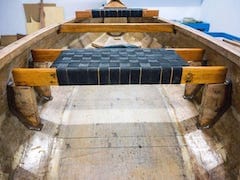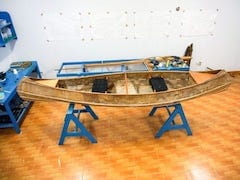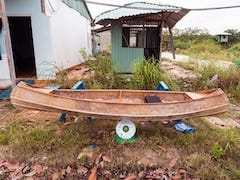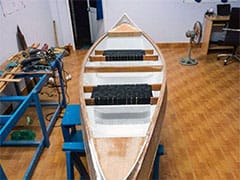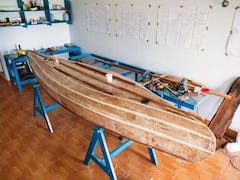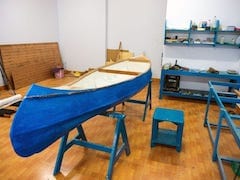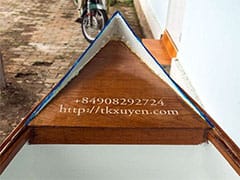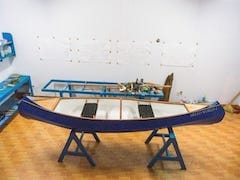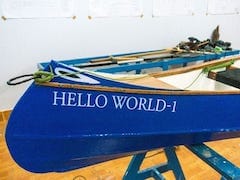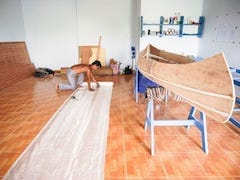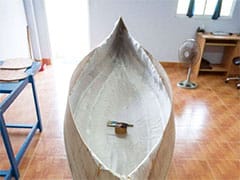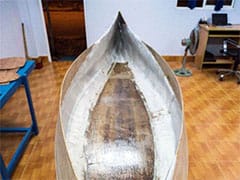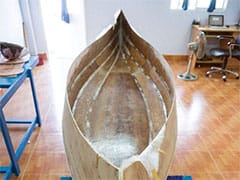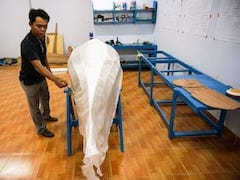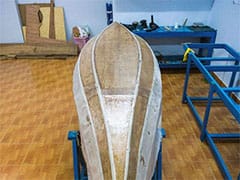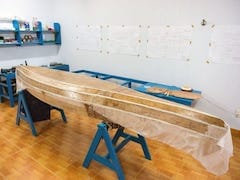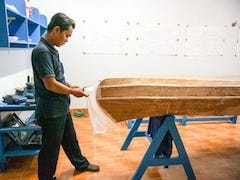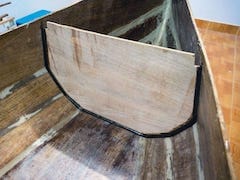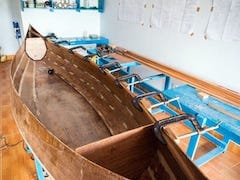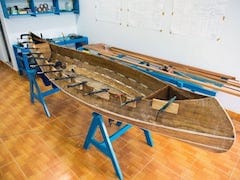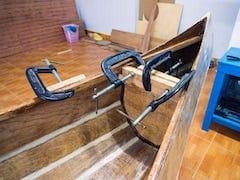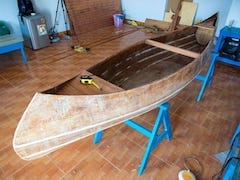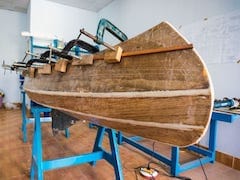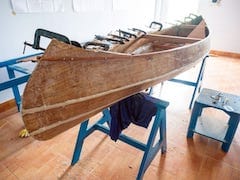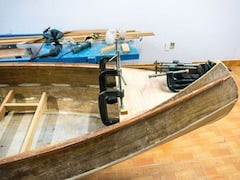I was choosing a good day, and also waiting for the tide (it’s just after full moon and the water is low still), time seemed to be so long. Finally, christened, trialled the boat, and started its maiden voyage, all in this same day! 😀 First impressions: the boat is very agile, good speed, better than the plastic boats I used. It’s a real pleasure once you ride into, and the boat gets momentum after just a few paddling strokes, the feeling was light and firm. It tracks very straight, perhaps even too straight. On the minus sides: the canoe’s fat hull makes the turning angle a bit wide (it’s a bit difficult to turn quickly), and it’s somewhat shaky at times, probably because the seats are too high, maybe I should cut the seats’ legs down a bit to lower the center of gravity (or maybe not).
Some photos for now, would post in – action videos once I finish trialling the boat more thoroughly on longer distances… The last several days, I’ve finished two additional testings: one 10km run and another 15km run. Overall, I’m very pleased with the canoe’s performance. The sustained speed is improved by a small margin, from 5 km/h to nearly 6 km/h, but the paddling effort seems to be much less, I don’t feel that tired like with those plastic boats. The windage is good, given that the boat tends to keep straight very well, once it gets momentum, it doesn’t drift much under unfavourable wind. The rolling motion can be unpleasant for novice paddlers, but I’m ok with that still, actually I prefer to have some little shaking, after all, it’s not solid flat land, it’s bobbing water!
Some very beautiful scenes captured when trialling my new canoe. It rains sometimes, but the sky was clear was bright. Waterways in this region have lots of traffic, high buildings along the riverside, many activities afloat, most people I met was opened and friendly. And everyone was asking from where I bought such a nice and handy boat! 😀 And many ones who patiently spends hours along the banks for casual fishing look at me with envious eyes 😀! It is pure pleasure to enjoy the river in many of its status: tranquil, wavy, windy, sunny, rainy… all within one same day, and it is even more pleasant to enjoy all those things in a built – by – your – own – hands boat! Well… every journey begins with a single step
… consider this first step successfully done! 😀
Today, I tested the canoe in tandem configuration, and I must admit, it’s a failure! The only point that I’m pleased with is that the boat is still very light and agile with two paddling hands, it’s very quick to get momentum, velocity is very good, and there’s less effort needed to propel the boat to optimal cruising speed. Things to be improved in tandem configuration: 1. distance between two seats is too tight, the paddles can collide if two hands are not paddling in sync; 2. the canoe rolls a lot, to the point of instability, the only cause is that seats are mounted too high. It’s a dilemma, I don’t really want to lower the seats, they make comfortable positions and reduce paddling effort. I’m considering possible fixes to this problem and would update the canoe in the upcoming weeks.

